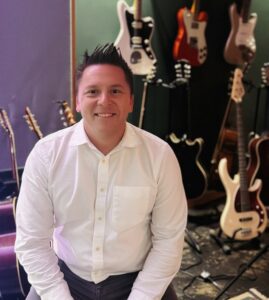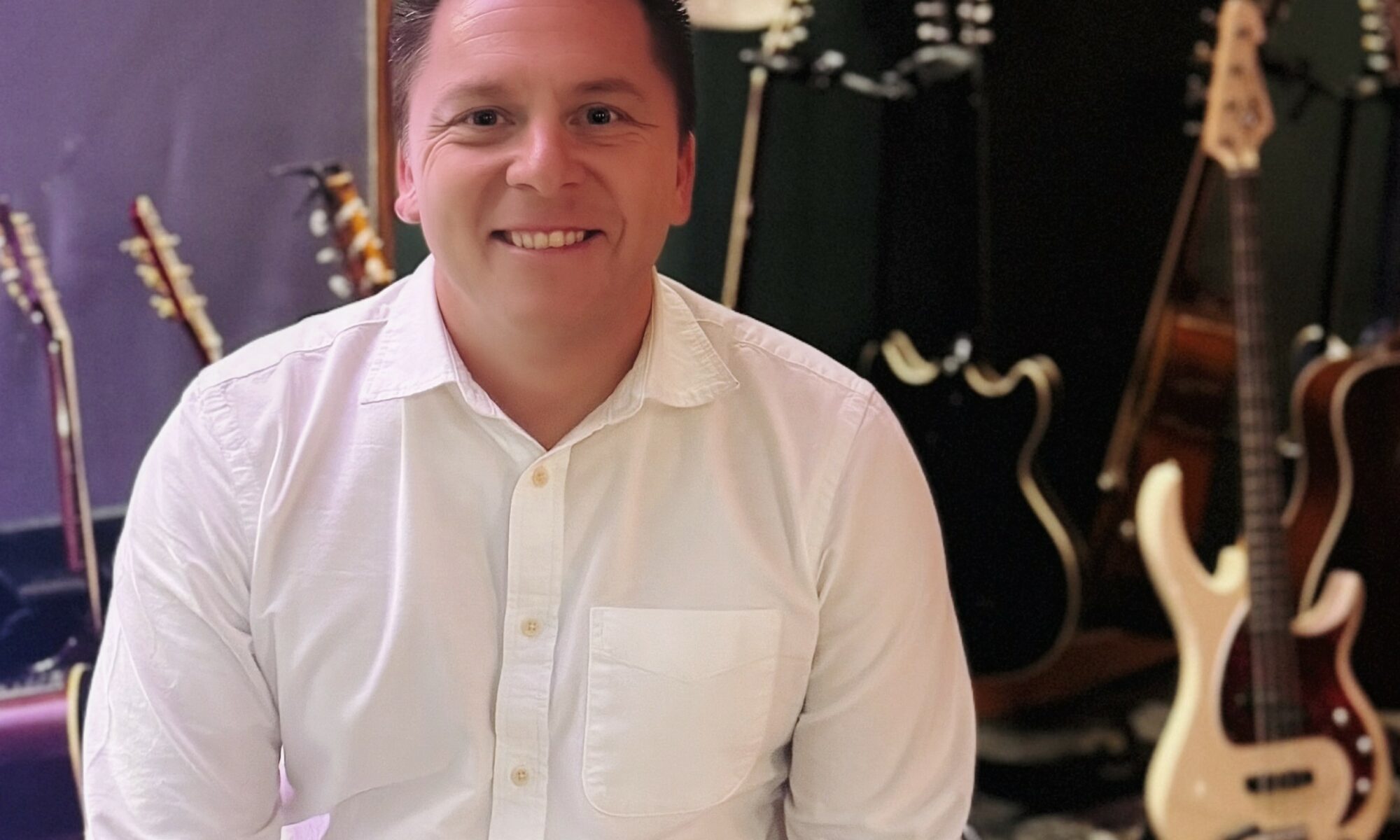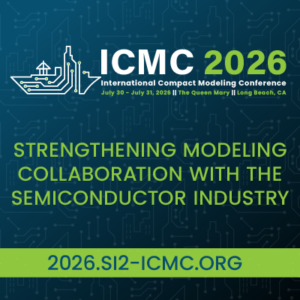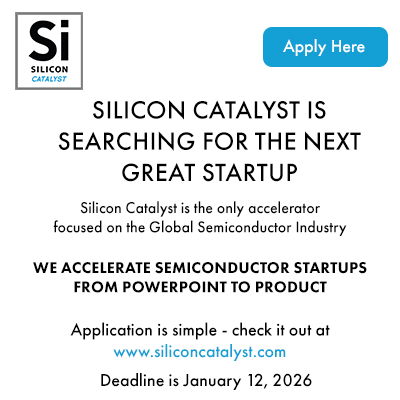
British-born, California-based entrepreneur, Gary Spittle, is the founder of Sonical – a disruptive, forward-thinking audio brand that is currently on the cusp of delivering something quite remarkable: think immersive, wireless, and completely lossless.
Gary holds a PhD. He investigated the use of binaural audio for improving conversations. He also holds numerous patents which help push forward innovations that make hearing technology more personal, flexible, and impactful.
What inspired you to launch Sonical, and what problem are you solving in the hearables space?
I founded Sonical in 2020 with the belief that our ears, and the devices we put in them, are the next frontier for personal computing. For decades, headphones and earbuds have been designed as simple sound making devices. Then Bluetooth and low power processing came along but the products remain closed systems, with fixed features defined by the product maker. This creates a barrier for innovation which prevents life-changing technology getting to the people that need it most. We saw an opportunity to create an entirely new product category, by building a platform that allows software developers to innovate directly for hearables, just as they do with smartphones.
Looking back since founding in 2020, what have been the most important milestones?
There have been several. Building our operating system, CosmOS, was a huge leap, it transforms hearables into open, upgradeable devices. Launching RemoraPro, our personal hearing computer with ultra-low-latency and lossless wireless audio streaming, demonstrated what’s possible when you reimagine the architecture of headphones. And now, with the support of Silicon Catalyst Venture, we’re moving from concept validation into scaling and commercialisation.
Technology & Differentiation
You’ve described Sonical’s vision as “Headphone 3.0.” Can you explain what that means for the industry?
Headphone 1.0 was wired and analogue, Headphone 2.0 was digital and wireless with Bluetooth. Headphone 3.0 is about hearing computers and putting the end user in control of what the product does – where hearables become intelligent, app-driven devices. Just like phones went from simple call-and-text machines to app ecosystems, headphones are on the same trajectory. CosmOS is the enabler – it allows multiple applications, from immersive audio to health monitoring, to run seamlessly on the same device.
How does your approach address issues like sustainability, longevity, and customisation in consumer devices?
Today’s headphones are often built to be low cost and have now reached a point where they are effectively disposable. They have the same limited features, short lifespans, and little scope for upgrades. With CosmOS, users can personalise their device through software, extending its value without replacing hardware. That means less waste, more choice, and new and better experiences over time. For manufacturers, it opens recurring revenue opportunities beyond hardware sales.
Market Opportunity & Partnerships
Hearables are forecast to become the next major personal computing platform. What evidence are you seeing to support that trend?
Already, wireless audio has become one of the most rapidly adopted consumer technologies. Market forecasts project the earbuds segment alone reaching over 1 billion units by 2030, and millions already use wireless headsets daily. Those numbers point to an opportunity: if hearables become more than just headphones – combining compute, context, sensing, and personalisation – they could emerge as a new personal platform. At the same time, advances in miniaturised sensors, AI, and low-power computing are turning the ear into a natural interface for health, productivity, and entertainment. We believe hearables will follow the same curve smartphones did, from a single-function product into a universal platform. The number of tech partners that want to work with us clearly supports this.
How do you envision app developers and partners contributing to this ecosystem?
Developers are the lifeblood of any platform. With CosmOS, they can create apps for everything from advanced audio experiences to wellness tools, without needing to redesign hardware. Our job is to give them the tools, APIs, and distribution channels to reach millions of users through a new type of product.
Can you share more about recent partnerships or pilots that highlight Sonical’s progress?
While some projects are still under NDA, I can say we’ve been working with world-leading audio brands, semiconductor companies, and health-tech innovators. Some of the software partners that we have announced publicly include Fraunhofer, Hear360, Oikla, Golden Hearing, Hear Angel and Idun Audio.
Technical Innovation
Your RemoraPro wireless technology enables ultra-low latency. What new applications does that unlock?
Latency is the lag between an audio event happening and the listener actually hearing it. This isn’t really a problem when you are just listening to music. But, for some applications such as gaming, watching movies or having conversations either in person or online, the delay can destroy the experience and in extreme cases make the product unusable. With RemoraPro, we’re achieving wireless latency so low it’s imperceptible. With CosmOS we also have the ability to process audio very fast which keeps the total system delay to a minimum. This unlocks new applications: musicians can perform wirelessly, gamers get instant feedback, and developers can deliver truly immersive sound environments.
Beyond audio quality, what advantages does RemoraPro bring to device makers and end users?
For product makers, RemoraPro is a complete solution that reduces integration time and complexity. For end users, it means access to new personalised experiences for the headphone products they already own. It also paves the way for new multi-channel and spatial audio use cases, which are game-changing for both creators and consumers.
Wellness & AI
You’ve talked about the ear as a gateway to wellness. What role can hearables play in areas like health and wellbeing?
The ear is an incredible point of access for biometric data. With the right sensors and algorithms, hearables can monitor heart rate, brain activity, stress levels, and even detect early signs of health conditions. Importantly, they can do this passively and discreetly, fitting seamlessly into daily life with a far greater accuracy than wrist worn devices.
At the same time, we see hearables playing a critical role in hearing protection. Millions of people, including children, already suffer from hearing damage, often leading to long-term challenges such as tinnitus. By enabling adaptive protection and personalised soundscapes, we can help reduce further damage while enhancing quality of life.
Another area we’re passionate about is specialised applications that are often overlooked. When product makers define the fixed features of a device, it’s difficult to justify niche use cases without making products prohibitively expensive. By opening up the platform through CosmOS, we allow developers to innovate directly for those needs, from professional audio tools to accessibility solutions, creating value where none existed before.
Sonical’s platform also uniquely brings together a wide spectrum of audio-related products, ranging from professional-grade devices to high-volume silicon and software systems. This breadth creates opportunities that few companies in the sector can match.
What types of AI-driven applications do you expect to see emerge first on CosmOS?
We are already seeing a blend of entertainment and wellbeing apps coming to the front. On one hand, personalised sound profiles, adaptive soundscapes, immersive audio, and AI-driven mixing tools. On the other, apps that help people manage stress, improve sleep, or support cognitive performance. The opportunity is vast, and embedded AI will be central to unlocking it.
Investment & Growth
Why was now the right time to partner with Silicon Catalyst ?
We’ve proven the hearing computer concept and secured strong technical and end user validation. Now it’s about scaling, building partnerships, and accelerating go-to-market. Silicon Catalyst and Silicon Catalyst Ventures not only provides capital, but also connects us to a network of executives, investors, and technologists who understand how to scale deep tech companies.
How will this investment accelerate your plans?
It allows us to expand developer engagement, strengthen pilot programs with hardware partners, and continue refining our technology stack. More importantly, it signals to the wider ecosystem that Sonical is a company to watch – we’re backed by investors and industry leaders who specialise in breakthrough technologies.
What does success look like for Sonical in the next 3 – 5 years?
Success is seeing CosmOS become the default platform for smart hearing products, just as Android and iOS became synonymous with smartphones. We want to enable a thriving developer community that unlocks completely new experiences for people that urgently need support, millions of users taking control of their hearing, and partnerships with the biggest names in audio, health, and computing.
Lessons from Bluetooth
You were part of the team that developed Bluetooth. What parallels do you see between that journey and Sonical’s vision today?
Bluetooth showed the power of an open standard to transform an industry. Back then, we had to convince the world that wireless connectivity could be reliable, affordable, and universal. With Sonical, the challenge is similar: we’re building the foundation for an entirely new ecosystem. The lesson is to think long-term, focus on putting the end user first, and create value for every stakeholder.
How are those experiences shaping the way you’re building the Headphone 3.0 ecosystem?
We know it takes more than great technology, you need the right partnerships, standards, and developer momentum. Bluetooth succeeded because we built a coalition. With Headphone 3.0, we’re applying the same approach: align the industry, unlock innovation with a large community of developers, and make it easy for consumers to adopt.
The History
Were there particular successes and failures from your past experiences that have shaped Sonical’s approach?
For sure. There is a common theme from the most successful projects I’ve worked on, that software is essential. More importantly, if you can enable others to develop on top of what you build it allows for differentiated products and new user experiences to be delivered. This drives higher customer satisfaction, expands the market and allows product makers to increase their pricing. I’ve seen the opposite happen too, where great products have failed due to lack of customisation or they were too complex which made them difficult to use.
Personal Motivation
On a personal note, what are you most proud of so far?
I’m proud that we’ve taken an ambitious vision and turned it into a platform that’s gaining real traction with global leaders. Building a team of brilliant engineers, securing top-tier partners, and earning investor confidence, that’s incredibly rewarding.
What keeps you motivated as you scale Sonical to the next stage?
The belief that we’re shaping the future of personal computing. If we succeed, headphones won’t just play music, they’ll become our most personal interface with technology. This elevates the device to a status where you won’t leave your home without it. That’s a once-in-a-generation opportunity, and seeing the impact we can have on individuals is what drives me every day.
Also Read:
CEO Interview with David Zhi LuoZhang of Bronco AI
CEO Interview with Jiadi Zhu of CDimension
CEO Interview with Adam Khan of Diamond Quanta
Share this post via:








Quantum Computing Technologies and Challenges